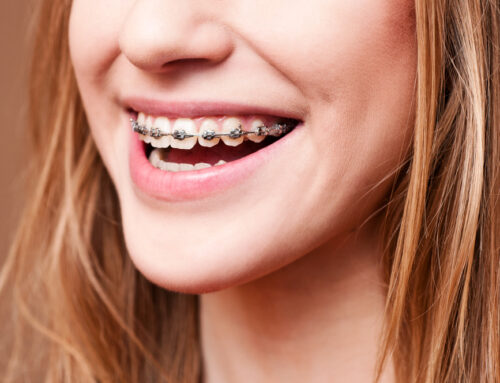An overbite is a common dental condition characterized by the upper teeth significantly overlapping the lower teeth. It’s more than just a cosmetic issue; it can lead to a variety of oral health concerns. At Ahava Orthodontics in Fort Worth, we specialize in diagnosing and effectively treating overbites, ensuring our patients achieve both a healthy bite and a beautiful smile.
What is an Overbite?
An overbite is a common orthodontic condition where the upper front teeth protrude significantly beyond the lower front teeth. It’s a type of malocclusion, which means the teeth do not align properly when the jaws are closed. Overbites are measured in terms of the vertical overlap (how much the top teeth come down over the bottom teeth) and the horizontal overlap (how far the top teeth jut out over the bottom teeth).
Overbites can be classified into two categories:
- Dental Overbite: This occurs when the positioning of the teeth causes the overbite. It’s often due to genetics, poor oral habits, or the result of early or late loss of baby teeth, leading to improper eruption of the permanent teeth.
- Skeletal Overbite: This type involves the jaw and occurs when the upper jaw (maxilla) is significantly larger than the lower jaw (mandible), causing the teeth to align improperly.
Overbites can lead to a variety of issues if not treated, including wear and tear on the teeth, jaw pain, and difficulties with chewing and speech. In severe cases, it can also affect facial structure and aesthetics, leading to decreased self-esteem. Treatment for an overbite may involve orthodontic procedures such as braces or clear aligners to move the teeth into the correct position, and in some cases, surgery to correct the jaw alignment for skeletal overbites.
Symptoms of an Overbite
The symptoms of an overbite can vary depending on the severity of the condition, but generally, they include:
- Visible Protrusion of Upper Teeth: The most obvious symptom of an overbite is when the upper front teeth significantly overlap the lower front teeth, sometimes even covering them entirely when the mouth is closed.
- Difficulty in Chewing or Biting: An overbite can affect the way the upper and lower teeth come together, making it challenging to bite or chew food properly.
- Speech Issues: Some people with an overbite may experience difficulties with speech, including a lisp or other speech impediments, due to the misalignment of the teeth.
- Jaw Pain or Discomfort: The misalignment caused by an overbite can lead to strain on the jaw muscles and joints, resulting in pain, discomfort, or even the development of TMJ disorders.
- Wear and Tear on Teeth: An overbite can cause uneven wear on the teeth, particularly on the lower front teeth, which may be more susceptible to chipping and erosion.
- Gum Problems: The position of the teeth in an overbite can lead to an increased risk of gum disease and recession, as the misalignment may make it harder to clean all surfaces of the teeth properly.
- Altered Facial Structure: In severe cases, an overbite can affect the overall appearance of the face, potentially leading to a protruding upper lip and a more pronounced chin.
- Self-Esteem Issues: Due to the aesthetic implications, individuals with an overbite may experience decreased self-confidence and concerns about their appearance.
Recognizing these symptoms early and consulting with an orthodontist can lead to more effective treatment outcomes, improving both the function and appearance of the bite and smile.

Diagnosing an Overbite
The diagnosis begins with a comprehensive dental and orthodontic evaluation. At Ahava Orthodontics, we utilize the latest in diagnostic technology, including digital X-rays and 3D imaging, to assess the severity of the overbite. This initial assessment is crucial in developing an effective treatment plan tailored to each patient’s needs.
Treatment Options
The treatment for an overbite varies depending on its severity and the patient’s age. Options include:
- Braces: Traditional braces are highly effective in correcting overbites by realigning the teeth and jaw.
- Clear Aligners: For less severe overbites or those concerned about the aesthetics of traditional braces, clear aligners like Invisalign offer a discreet alternative.
- Growth Modification Devices: In younger patients, devices can be used to guide the growth of the jaw and improve the bite.
- Surgery: In severe cases, particularly in adults, orthognathic surgery may be necessary to correct the jaw alignment.
Best Age for Treatment
The best time to start seeing an orthodontist for an overbite is around the age of 7 to 10. This is when a child’s jaw is still growing, and certain conditions can be easier to address. Early intervention can often simplify later treatment or, in some cases, eliminate the need for further orthodontic work.
How Ahava Orthodontics Can Help
At Ahava Orthodontics in Fort Worth, we understand the complexities of treating overbites. Our experienced orthodontists, Dr. Andy and Shawne Barron, are dedicated to providing personalized care, employing a blend of expertise, compassion, and the latest orthodontic innovations. We pride ourselves on our patient-centered approach, ensuring that each individual receives the treatment that best suits their needs and lifestyle.
For our younger patients, we focus on early intervention, utilizing treatments that guide jaw growth and development to correct overbites effectively. For adults and teenagers, we offer a range of options, from traditional braces to the latest in clear aligner technology, ensuring that treatment is not only effective but also fits seamlessly into their lives.
Get Treatment for Your or Your Childs’ Overbite in Fort Worth
An overbite can significantly impact oral health and aesthetics, but with the right treatment plan, it’s entirely correctable. At Ahava Orthodontics, we’re committed to transforming smiles and improving the lives of our patients in Fort Worth. Whether you’re exploring treatment options for yourself or your child, we invite you to experience the Ahava difference. Contact us today to schedule your consultation and take the first step toward a healthier, more beautiful smile.




